This flavor-packed pan-fried eggplant is inspired by Chinese and Japanese flavors. Serve hot or at room temperature, over rice or as a side dish.
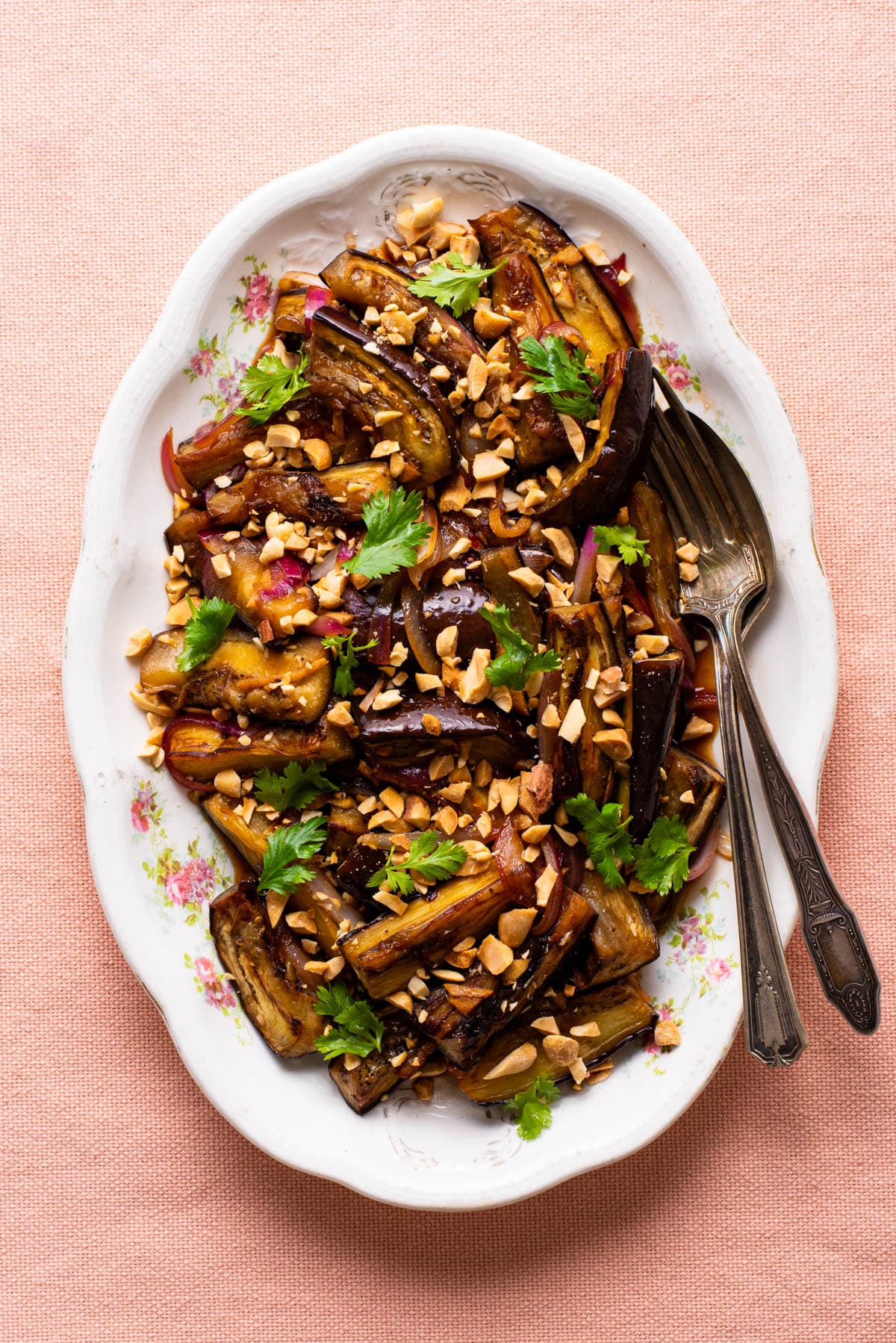
One of the vegetables I get the most questions about is eggplant (a.k.a. aubergine to my friends across the pond). And I totally get the confusion. Unlike, say, potatoes, cooking with eggplant is not very intuitive. But luckily, it’s also not rocket science. In my experience, the easiest way to cook eggplant is in a pan on the stove.
This flavor-packed pan-fried eggplant is inspired by dishes I’ve had in Chinese and Japanese restaurants. (Unlike many other eggplant recipes, this one has no breading.) It has a creamy texture, caramelized flavor, and gets coated in a savory-salty soy sauce glaze with garlic, ginger, and red onion; crushed peanuts and cilantro crown the top. It’s so good and rich, you may be temped to eat the whole skillet by yourself. (Been there, done that.)
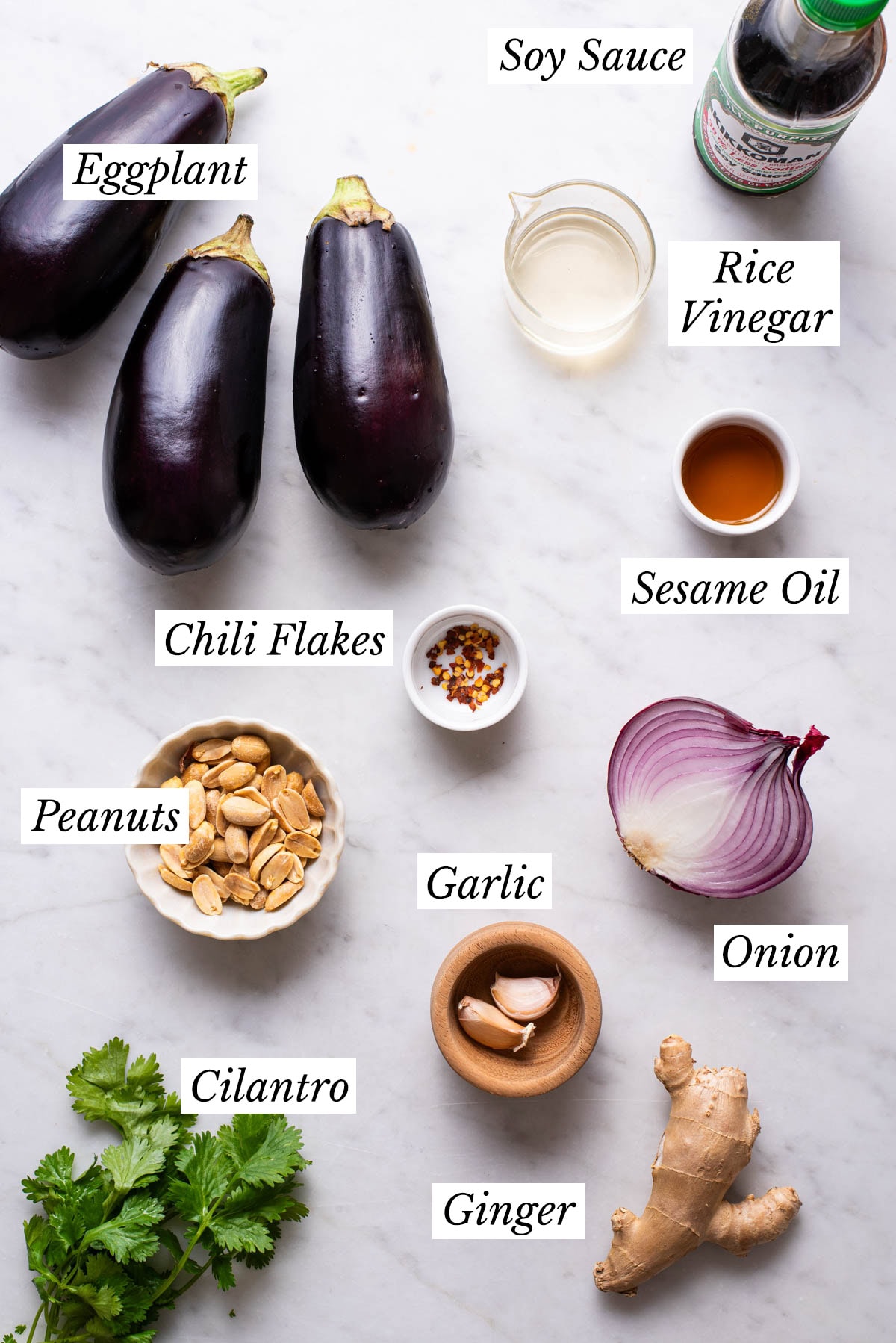
What’s In This Pan-Fried Eggplant
This dish consists of eggplant that gets deeply browned in a skillet, then removed. In that same pan, you then quickly sauté red onions, garlic, ginger, and chili flakes, and turn them into a glaze by adding soy sauce, rice vinegar, and sesame oil. Finally, you return the eggplant to the pan and toss it in the glaze. The dish gets garnished with crushed peanuts and cilantro.
How to Make Pan-Fried Eggplant with Soy Glaze
Step 1: Salt the Eggplant
Cut the eggplant into chunks and place in a colander, sprinkling each layer generously with salt. Set aside for 15 to 30 minutes (this helps tame the eggplant’s bitterness – more details below). When the eggplant looks sweaty, transfer it to a kitchen towel and pat dry.
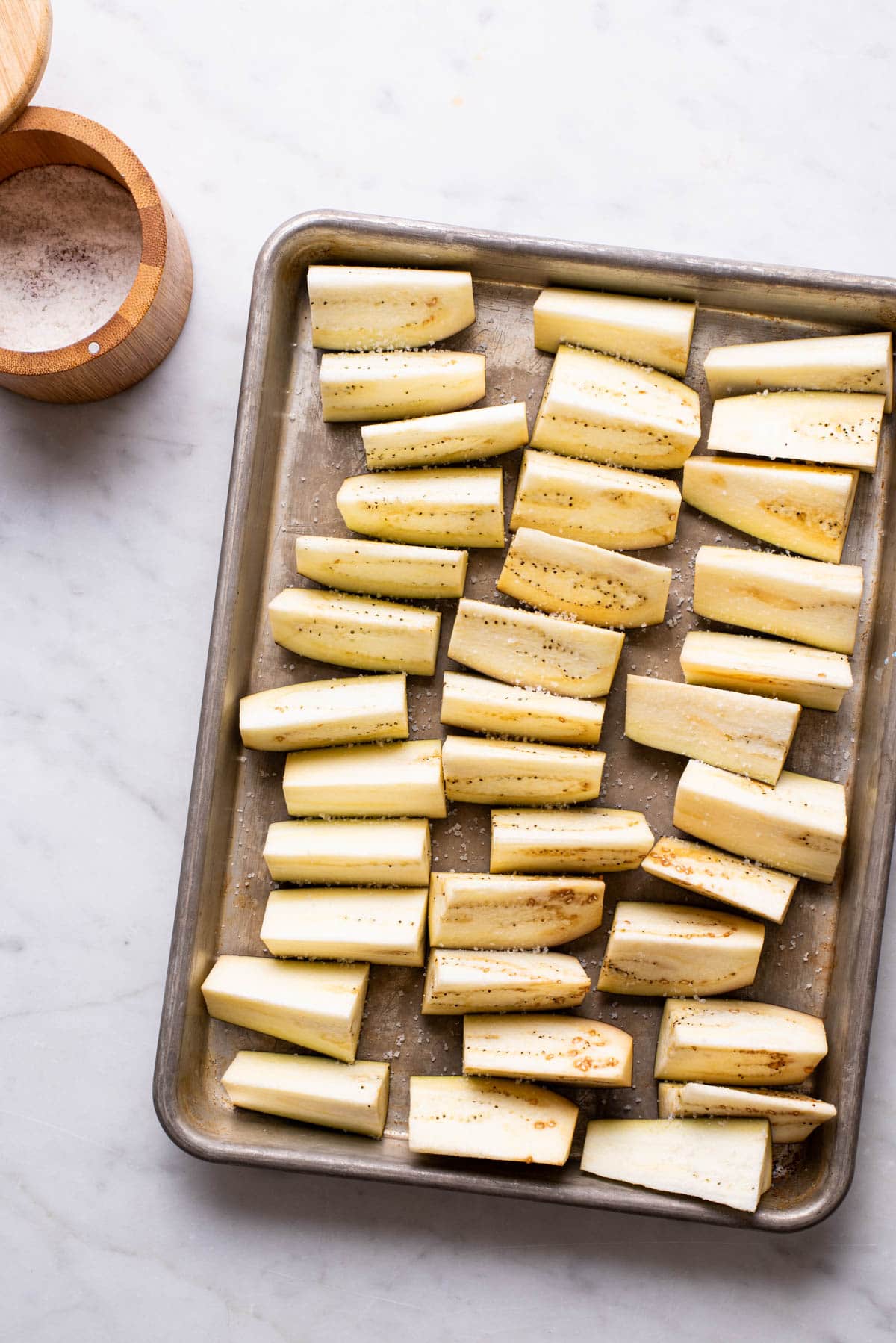
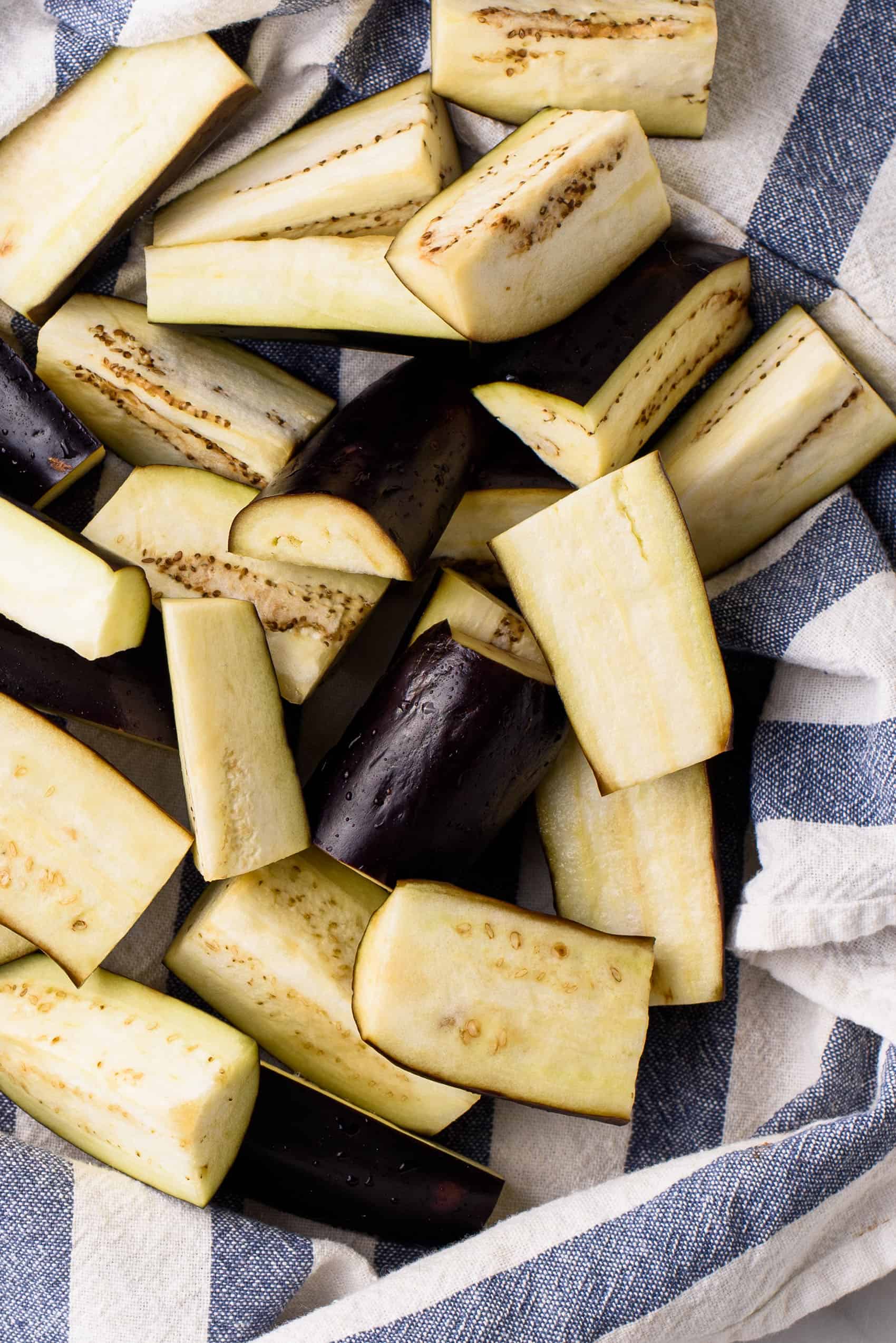
Step 2: Pan Fry the Eggplant
Working in two batches, cook the eggplant in a single layer in a pan over medium heat until deeply golden. To prevent it from turning out greasy – and to speed up the softening process – cover the skillet with a lid while searing. Resist the urge to move/flip the eggplant more than necessary, as it is prolonged contact with the hot pan that will give you that delicious caramelization. Remove all the eggplant from the pan and set aside.
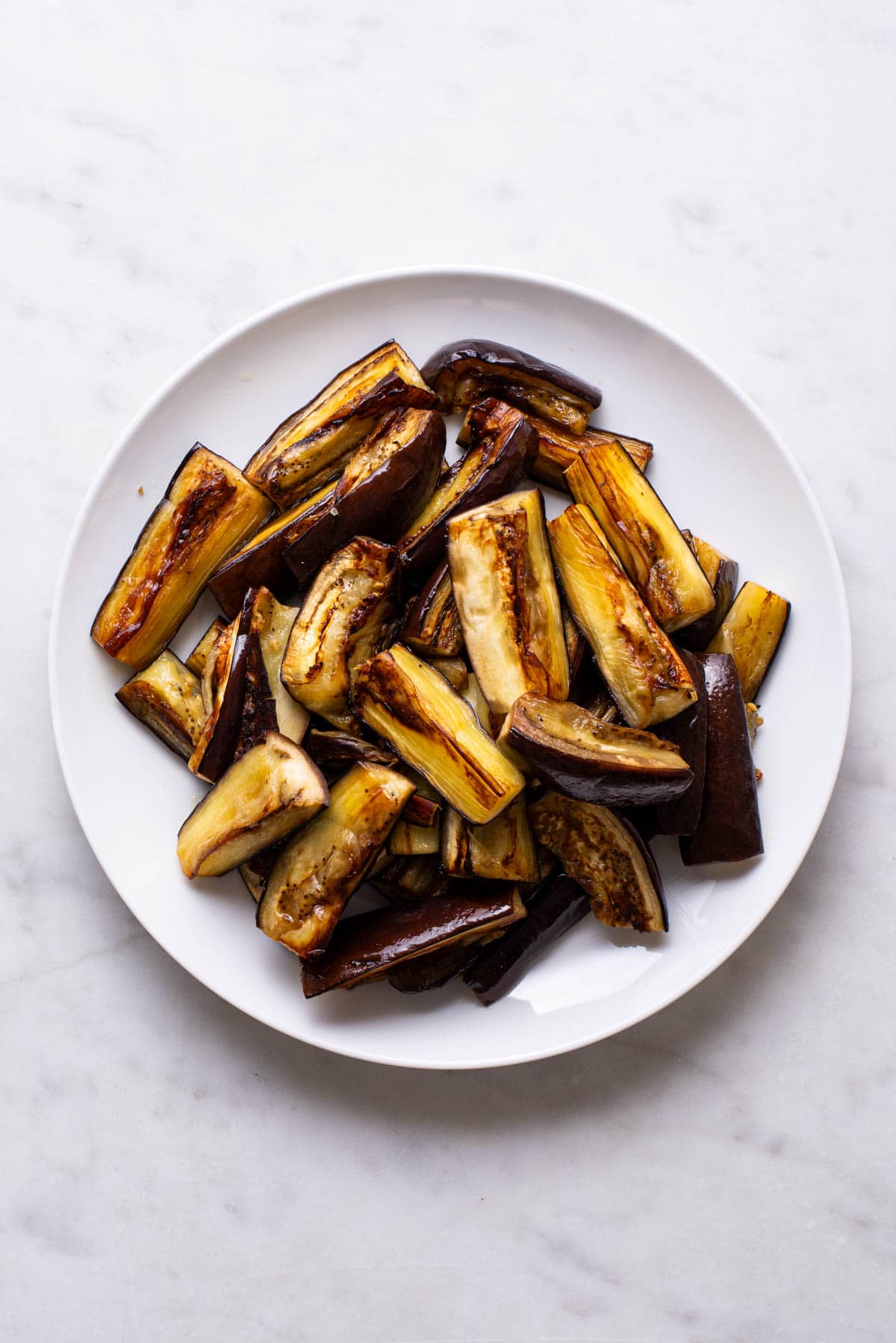
Step 3: Glaze the Eggplant
Cook the onion, garlic, ginger, and chili flakes in that same skillet for just a few minutes, then add the soy sauce, rice vinegar, and sesame oil. Finally, add all the eggplant back in, toss to coat it in the glaze, and turn the heat off. Sprinkle with crushed peanuts and cilantro before serving.

Why You Should Salt Eggplant
Eggplant naturally contains a lot of moisture and some bitterness. Salting it and setting it aside for 15 to 30 minutes before cooking helps combat both of these issues. The salt makes the eggplant “sweat out” (literally) the excess moisture and bitter flavor. However, if you use Japanese eggplants (the long and skinny ones), you can skip the salting step.
To Peel or Not To Peel
One of the pain points of cooking eggplant is deciding whether or not to peel it. The short answer: leave the skin on. The longer answer: it depends. If your eggplants are small, their skin is probably tender. But if they’re on the larger side, while the skin remains edible, it may have a tougher texture. It also depends on the recipe. If you plan to eat it in chunks or slices, leave the skin on. But for other uses (like this eggplant “caviar”), eggplants can be roasted whole, then peeled, and pureed.
The most important reason to leave the skin on is to preserve nutrients. Like with many fruits and vegetables, most of eggplant’s nutritional value is in its skin. Aside from being high in fiber (like all plants), eggplants have antimutagenic [anti-cancer], antimicrobial, and antiviral properties.
How to Serve Soy-Glazed Eggplant
What I love about this dish is that you can serve it hot, at room temperature, or cold. It’s absolutely delicious in every way. Have it over fluffy rice or soba noodles for a complete meal, or serve as a side.
More Eggplant Recipes
- Mini Eggplant Lasagnas
- Ottolenghi-Inspired Eggplant with Tahini
- Ukrainian Eggplant Caviar (“Ikra”)
- Air Fryer Miso Eggplant
Let me know if you try this recipe! Give it a rating below and leave a comment, and don’t forget to tag your creation with @thenewbaguette on Instagram.
The Full Recipe
Print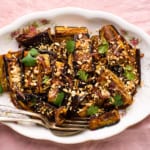
Pan-Fried Eggplant with Soy Sauce Glaze
- Prep Time: 20 minutes
- Cook Time: 20 minutes
- Total Time: 40 minutes
- Yield: 4 servings 1x
- Category: Vegetables
- Method: Stovetop
- Cuisine: Asian
- Diet: Vegan
Description
This flavor-packed pan-fried eggplant recipe is inspired by Chinese and Japanese flavors. Serve hot or at room temp.
Ingredients
- 3 small eggplants (about 1 1/4 pounds), ends trimmed
- About 3 tablespoons neutral oil, like avocado, organic canola, or refined coconut
- 1/2 medium red onion, thinly sliced* (see note below)
- 2 medium garlic cloves, minced
- 1 tablespoon peeled and minced fresh ginger
- 1/4 teaspoon red pepper flakes
- 2 tablespoons soy sauce
- 1 tablespoon seasoned rice vinegar
- 2 teaspoons toasted sesame oil
- About 1/4 cup crushed peanuts, for serving*
- Fresh cilantro, basil, or scallions, for serving
Instructions
- Cut the eggplants into 2-inch chunks. Place a layer of eggplant into a colander and sprinkle liberally with salt. Continue layering and salting each layer. Set aside for 15 to 30 minutes.
- When the eggplant looks sweaty, transfer it to a kitchen towel and pat dry.
- Heat a large skillet over medium heat and add enough oil to coat the bottom. Arrange half of the eggplant in a single layer in the skillet and cover tightly with a lid. Cook until golden brown, 3 to 4 minutes, then flip and brown the other side. Remove from the skillet and cook the second batch, adding more oil as needed. Remove all the eggplant and set aside.
- Add more oil to the skillet if needed. Add the onion and cook until it’s slightly softened and browned, about 2 minutes. Then add 2 minced garlic cloves, 1 tablespoon minced ginger, and 1/4 teaspoon red pepper flakes, and cook for 30 seconds more.
- Add 2 tablespoons soy sauce, 1 tablespoon vinegar, and 2 teaspoons sesame oil. Add the eggplant back in and toss to coat. Transfer to a serving platter and sprinkle with peanuts and cilantro.
Notes
- You can sub with white onion or shallots.
- You can sub peanuts with roasted cashews. If you’re allergic to nuts, garnish with toasted sesame seeds instead.
Nutrition
- Serving Size: 1/4 of the recipe
- Calories: 170
- Carbohydrates: 9.7 g
- Fiber: 5.5 g
- Protein: 3.1 g

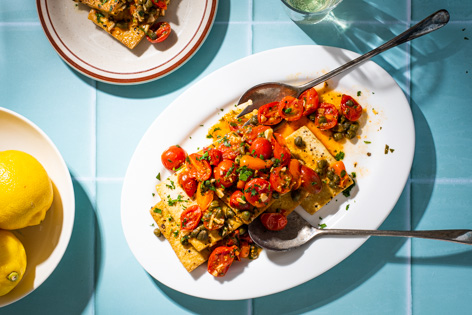

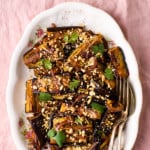
Emily says
I made this and it was perfect! Next time I’m doubling it. Was fantastic and the perfect amount of spice. I think I’ll try it with zucchini next time. Thanks for a great recipe!
Alexandra says
Thank you for the feedback, Emily! I’m so glad you liked this. LOVE the zucchini idea 🙂
Miranda says
This was fantastic, thank you! I’ve never been successful with making eggplant tasty – but this did it! I added chicken and broccoli, served over rice and it made a delicious dinner!
Alexandra says
So glad this worked out for you! Thank you for the feedback 😀
Tami says
This has been my favorite way to make eggplant all summer. Thank you for sharing!
Alexandra says
Happy to hear it 😀
Stasha says
Made this several times now, it’s delicious and easy. In my regular rotation!
Alexandra says
Awesome! So happy you like this 😀
Anna says
This looks delicious Alex! I’ve just stumbled on your blog from pinterest, you’re website is beautiful! Keep up the good work 🙂
Alexandra says
Thank you so much, Anna!